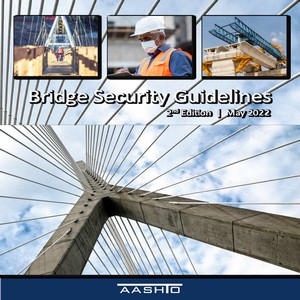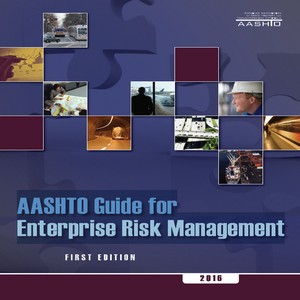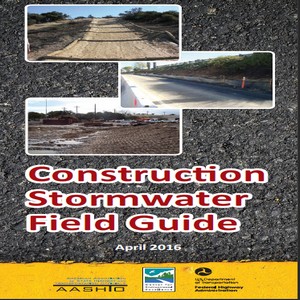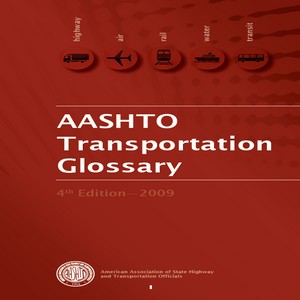AASHTO-BSG-2: Bridge Security Guidelines
To aid in asset management of bridges, it is advisable that bridge owners prioritize the importance of both new bridges in the planning phase and existing bridges already in inventory to plan the appropriate allocation of limited resources.
Bridge owners should conduct a formal vulnerability study to determine appropriate structural hardening or other countermeasures to include in new designs or in the retrofit of existing bridges to mitigate the identified risks or vulnerabilities on bridges deemed important. A risk management approach should be developed to outline and aid the decision-making process to mitigate risks of vulnerabilities.
In AASHTO-BSG-2, Articles 1.2 and 1.3 provide uniform procedures for prioritizing the importance of bridges and assessing the risk to bridge components, respectively, and should be used by bridge engineers and planners unless bridge owners have developed alternate procedures for prioritizing bridge importance.
These guidelines provide uniform methods bridge owners can use to prioritize the importance of bridges and assess the risk to bridge components. While these guidelines advise bridge owners to prioritize the importance of their bridges and the risk to components for the allocation of limited resources, they do not advocate the use of a particular method.
Previously, no uniform procedure existed, and in the absence of another option, some states developed their own procedures, incorporating security prioritization methods that, while similar, differ in the details. In addition, state procedures to assess bridge importance have been developed by some departments of transportation to assist in prioritizing seismic rehabilitation. These procedures also may be used in conjunction with security considerations, provided some procedure approved by the bridge owner is used for this purpose.
The first step in the risk assessment process provided in these guidelines is to identify bridge assets in a bridge owner’s inventory. The second step is to prioritize the criticality of those bridges based on symbolic and economic importance to the region or nation using the procedure outlined in Article 1.2 of AASHTO-BSG-2 or another method approved by the bridge owner.
Prioritization according to criticality first is important before conducting vulnerability analyses of individual bridges and components to focus limited time and resources toward vulnerability assessments of the most critical bridges. Given the vast number of assets in many bridge owners’ inventories, it would be impractical and costly to include vulnerability analyses of all bridges as part of the process to determine criticality.
As per AASHTO-BSG-2, when determining criticality of bridges, many procedures include the following factors, and they should be considered for any method used for this purpose:
• Social and economic impact of bridge loss;
• Role played by bridge in defense or security of a region, state, and nation;
• Average daily traffic (ADT);
• Average daily truck traffic (ADTT);
• Distance to nearest detour;
• Symbolic importance;
• Contributing resilience to the community or areas served; and
• Multimodal traffic carried by the bridge.
The third step is to conduct a risk assessment of the individual bridges deemed critical and their components to determine the most effective and cost-efficient mitigation measures. To this end, the risk assessments should include, at a minimum, potential threat characterization and probability, likelihood of threats to specific bridge components, analysis of component response, replacement time and cost, and impact on overall bridge integrity.
Once the risk assessment process is complete, the results should be used to inform decisions on resource allocation and mitigation efforts. It is recommended that the risk analysis procedure be used in an iterative manner considering proposed countermeasures both when determining initial mitigation measures and afterward when considering new mitigation measures with subsequent resources. Completing the process in an iterative manner will allow bridge owners to reduce risk to an acceptable level over a specified time given available resources.
Guidance on security strategies and risk reduction may be found in the following documents: Design of Critical Bridges for Security against Terrorist Attacks (Winget and Williamson, 2003), A Guide to Highway Vulnerability Assessment for Critical Asset Identification and Protection (AASHTO, 2002), Improving Surface Transportation Security: A Research and Development Strategy (Transportation Research Board and National Research Council, 1999),
Protecting Public Surface Transportation against Terrorism and Serious Crime: An Executive Overview (Jenkins, 2001), and Recommendations for Bridge and Tunnel Security (Blue Ribbon Panel on Bridge and Tunnel Security, 2003), as well as in the ASCE Journal of Bridge Engineering articles “Analysis and Design of Critical Bridges Subjected to Blast Loads” (Winget, Marchand, and Williamson, 2005), “Risk-based Prioritization of Terrorist Threat Mitigation Measures on Bridges” (Ray, 2007), and “Risk Management and Design of Critical Bridges for Terrorist Attacks” (Williamson and Winget, 2005).
It is important to note that once critical/vulnerable bridges have been identified, bridge owners should consider developing a process for restricted access to bridge plans for such structures. Such processes should be in compliance with guidance provided under the U.S. Department of Transportation Federal Highway Administration (FHWA) 49 CFR Part 15-Protection of Sensitive Security Information. The Department of Homeland Security’s Form 11054 may be used as a coversheet for bridge records deemed Sensitive Secure Information (SSI).





Reviews
There are no reviews yet.